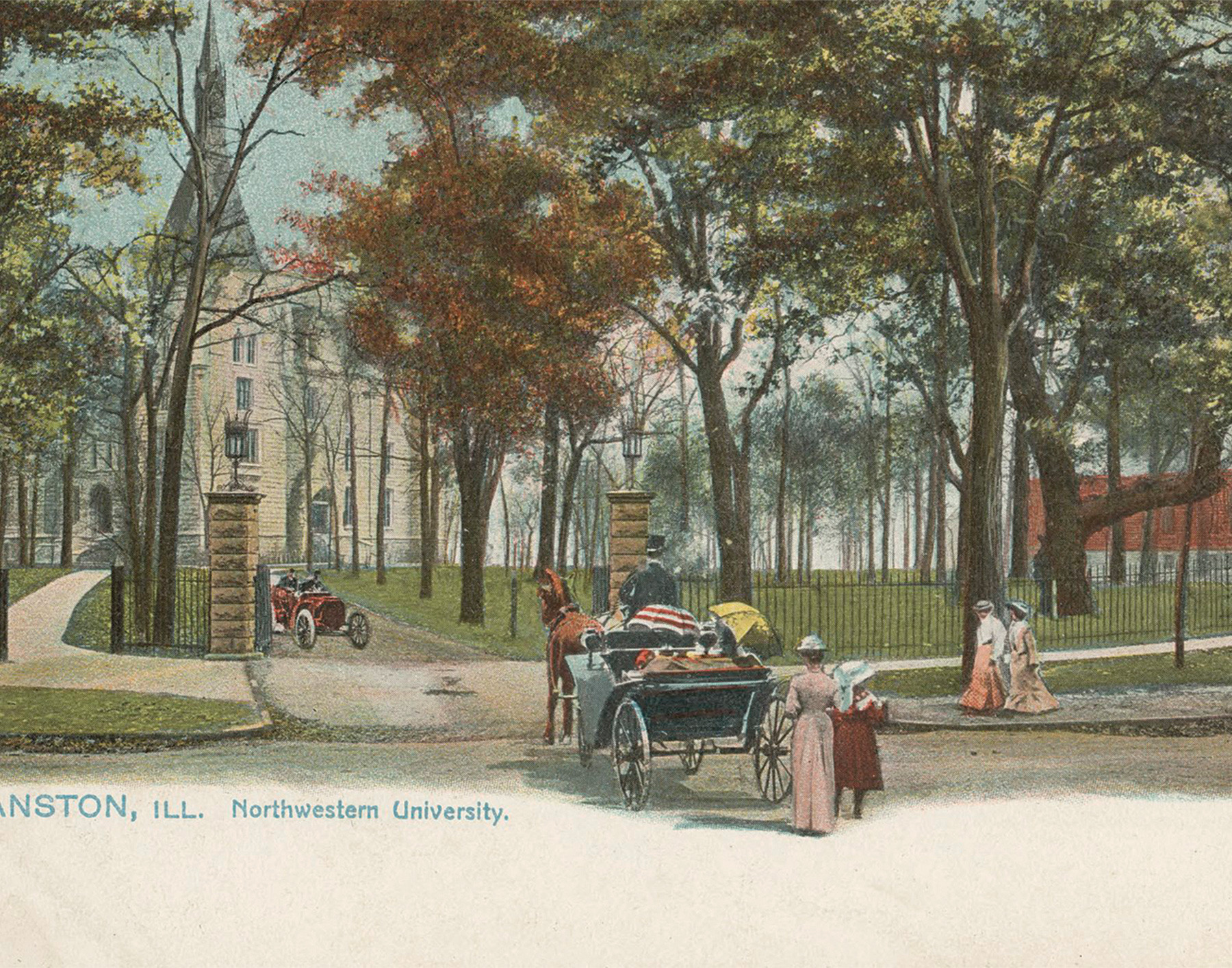It was the majestic oak trees near the shore of Lake Michigan that caught Orrington Lunt’s eye on his first visit to the land that today is Northwestern University’s Evanston campus.
“The thought first struck me that here was where the high and dry ground began,” Lunt, one of the University’s founders, later wrote. “It continued in my dreams of that night, and I could not rid myself of the fairy visions constantly presenting themselves in fanciful beauties — of the gentle waving lake — its pebbly shore — the beautiful oak openings and bluffs beyond.”
Bedazzled by the oak savanna along the Lake Michigan shore 12 miles north of Chicago, Lunt helped convince the other founders that this was the place to set down roots for a new university in the Northwest Territory. In 1853 they purchased 379 acres of land for $25,000.
Many stately bur and swamp white oaks, some well over 200 years old, still stand in splendor on the Evanston campus. You’ll find these hardy natives by the John Evans Alumni Center, the Weber Arch and in the wooded groves between University Hall and Deering Meadow and north of Deering Library. They are home to squirrels, cardinals, Cooper’s hawks and crows that often roost in them in late afternoon.
The Oak Savanna
Someone once poetically described the crescent-shaped oak savanna on campus as “the eyebrow of beauty,” but no one knows for sure who said it.
An oak savanna is a type of savanna, or lightly forested grassland, where oaks are the dominant trees. These savannas were maintained historically through wildfires set by lightning or humans, grazing, low precipitation and/or poor soil.
Oaks were often used as trail-marking trees by Native Americans. There used to be several such oaks on campus. The iconic “Old Oak” was thought to have been a trail marker tree.
The Old Oak
Before there was the Rock, students gathered at the “Old Oak,” a giant white oak that grew near University Hall until 1904. The tree was estimated to be at least 500 years old at the turn of the 20th century. Students used the oak as a place for speech, song, trysts — and class photos.




Reader Responses
As an avid botanist and educator for many years, I noticed the misidentified oak species in the Northwestern Magazine, fall 2018 edition. On page 37, the depictions indicate Quercus macrocarpa and Quercus alba in reverse identification with the drawings of these oaks.
Perhaps other readers will notice this distinct mistake.
—Anne Marie Westerhold Naperville, Ill., via Northwestern Magazine
Fascinating piece on the oaks on campus [“Roots: Northwestern’s Oaks,” fall 2018, page 36]. Just sorry that you didn’t have a photo of the Garrett class of 1888 so we might have seen my wife’s great-grandfather.
Over here in Oakland County, Michigan, we have been celebrating the 200th anniversary of the “discovery” of the county by Territorial Governor Lewis Cass and a group of leading Detroiters.
In October 1818 our “explorers” found that the land was excellent to good, there was plenty of clear water for transportation, drinking and mill power, stones for foundations — and there were plenty of oak openings.
—Michael Carmichael '64, Bloomfield Hills, Mich., via Northwestern Magazine
No one has commented on this page yet.
Submit a Response